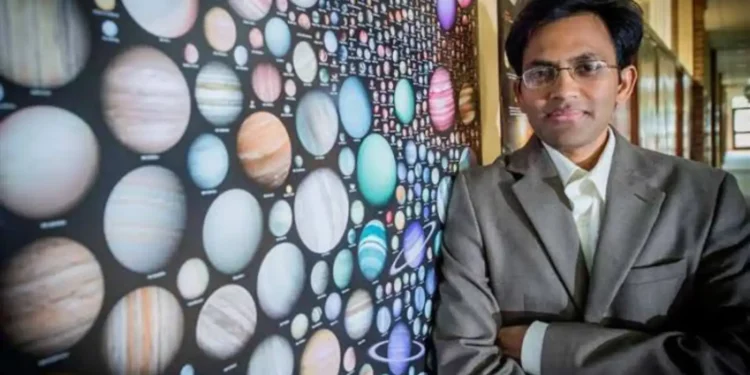Indian-origin astrophysicist Dr. Nikku Madhusudhan has made headlines worldwide after he and his team at the University of Cambridge detected potential signs of alien life on a distant exoplanet, K2-18b. Using NASA’s powerful James Webb Space Telescope (JWST), the team identified the presence of dimethyl sulfide (DMS) and dimethyl disulfide (DMDS)—gases that, on Earth, are primarily produced by marine algae.
The discovery is considered a significant milestone in the search for extraterrestrial life, as these gases could point to biological processes taking place on another planet.
🔭 A Stellar Journey From India to Cambridge
Born in 1980 in India, Dr. Madhusudhan began his academic journey with a B.Tech. from the Indian Institute of Technology (IIT-BHU), Varanasi. He later pursued his master’s and Ph.D. at the prestigious Massachusetts Institute of Technology (MIT), focusing on the study of exoplanetary atmospheres—worlds beyond our solar system.
Following his doctoral studies, he held research positions at several top institutions, including MIT, Princeton, and Yale, where he was named a YCAA Prize Postdoctoral Fellow. In 2013, he joined the University of Cambridge, where he steadily rose through the ranks—from lecturer to Reader in Astrophysics and Exoplanetary Science, and now serves as a full professor.
🌍 Inventor of the “Hycean World” Concept
Dr. Madhusudhan is widely recognized for introducing the concept of Hycean planets—a new class of exoplanets with hydrogen-rich atmospheres and potentially life-supporting oceans beneath. These worlds are considered prime candidates in the ongoing search for life beyond Earth. His research focuses on studying the atmospheres, internal structures, and formation processes of such planets.
He employs advanced modeling techniques and observational data from both space-based and ground-based telescopes like JWST, the Hubble Space Telescope (HST), and large observatories on Earth.
🌌 Groundbreaking Research & Discoveries
Over the years, Dr. Madhusudhan has contributed significantly to exoplanetary science:
- 2012: Suggested that the super-Earth 55 Cancri e might have a carbon-rich interior.
- 2014: Led a study measuring water levels in three hot Jupiters, revealing less water than expected.
- 2017: Part of the team that detected titanium oxide in the atmosphere of exoplanet WASP-19b.
- 2020: Conducted an earlier study on K2-18b, suggesting the potential presence of water on its surface.
🏅 Awards and Recognition
Dr. Madhusudhan’s groundbreaking work has earned him several prestigious awards:
- EAS MERAC Prize in Theoretical Astrophysics (2019)
- Pilkington Prize for Excellence in Teaching (2019)
- IUPAP Young Scientist Medal in Astrophysics (2016)
- ASI Vainu Bappu Gold Medal (2014)
Also Read: Earthquake of Magnitude 5.8 Hits Afghanistan; Tremors Felt Across Delhi-NCR and Jammu & Kashmir















 Categories
Categories









